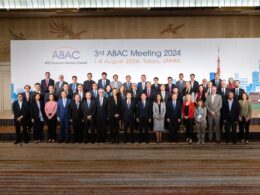A United Nations body overseeing the carbon market mechanism under the Paris Agreement has adopted critical new standards aimed at ensuring the environmental integrity of carbon credits generated through emission-reducing projects.
The Supervisory Body for the Paris Agreement Crediting Mechanism (PACM) finalised rules governing how projects measure actual emissions reductions and account for unintended emissions increases—both essential for ensuring that carbon credits are credible, additional, and aligned with the goals of the Paris Agreement.
Among the most significant outcomes of the meeting was the adoption of two technical standards:
- Baseline standard: This defines how to estimate what emissions would have occurred without the project—known as the ‘baseline’. For the first time, PACM includes mandatory downward adjustments to baselines, starting with a 10% cut below business-as-usual levels, and requiring at least a 1% reduction over time. This is aimed at preventing over-crediting and aligning crediting levels with a trajectory toward net-zero emissions.
- Leakage standard: This sets out how to identify and account for unintended emissions increases that might occur elsewhere as a result of a project. In particular, it clarifies that REDD+ projects must be incorporated into national climate strategies to qualify, enhancing coherence with host country policies and improving environmental credibility.
“These decisions ensure that crediting levels are set consistently with a pathway to net neutrality,” said Martin Hession, Chair of the Supervisory Body. “We are now uniquely positioned to support countries interested in using the mechanism, and will continue to enhance our communication, provide technical assistance, and ensure quality in transitioning older projects.”
In addition to the new standards, the Supervisory Body agreed on further steps to support implementation. These include launching consultations on how project benefits can be shared equitably with host countries and boosting capacity-building efforts to help countries develop necessary infrastructure and institutional systems.
A decision was also made regarding the transition of cookstove projects from the Clean Development Mechanism (CDM) to PACM, requiring updated data and methodologies in line with the latest guidance.
Maria AlJishi, Vice Chair of the Supervisory Body, noted the importance of stakeholder engagement: “These standards provide the clarity developers need to begin designing new climate activities under PACM and represent a major step toward full operationalisation.”
With the core standards now in place, the first methodologies under PACM are expected to be approved by the end of 2025. However, fewer-than-expected project transitions from the CDM may result in a short-term funding gap until new projects begin generating credits from 2026 onward.
The Supervisory Body will continue to develop additional tools, guidelines, and a central registry, while monitoring the financial outlook and reporting progress to the Parties to the Paris Agreement.





















